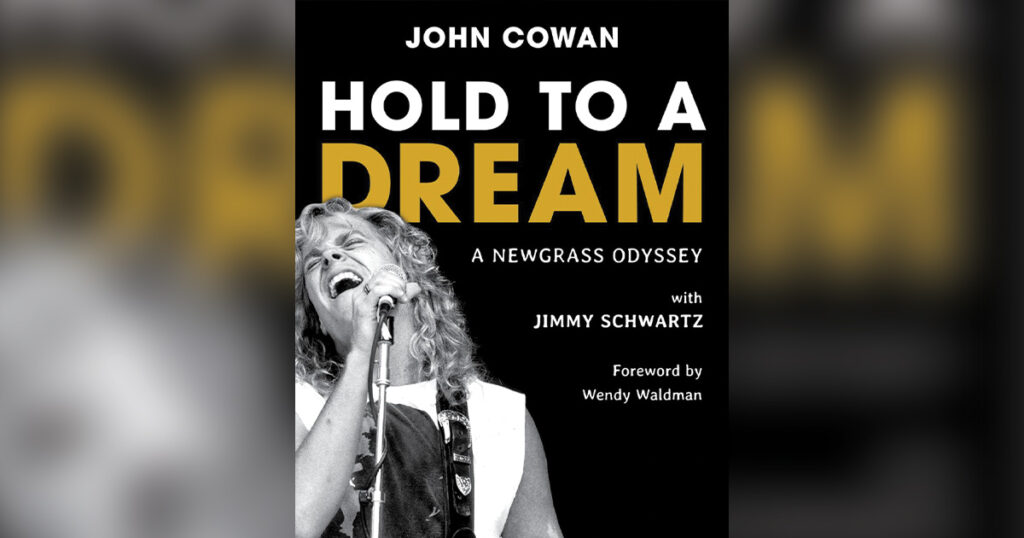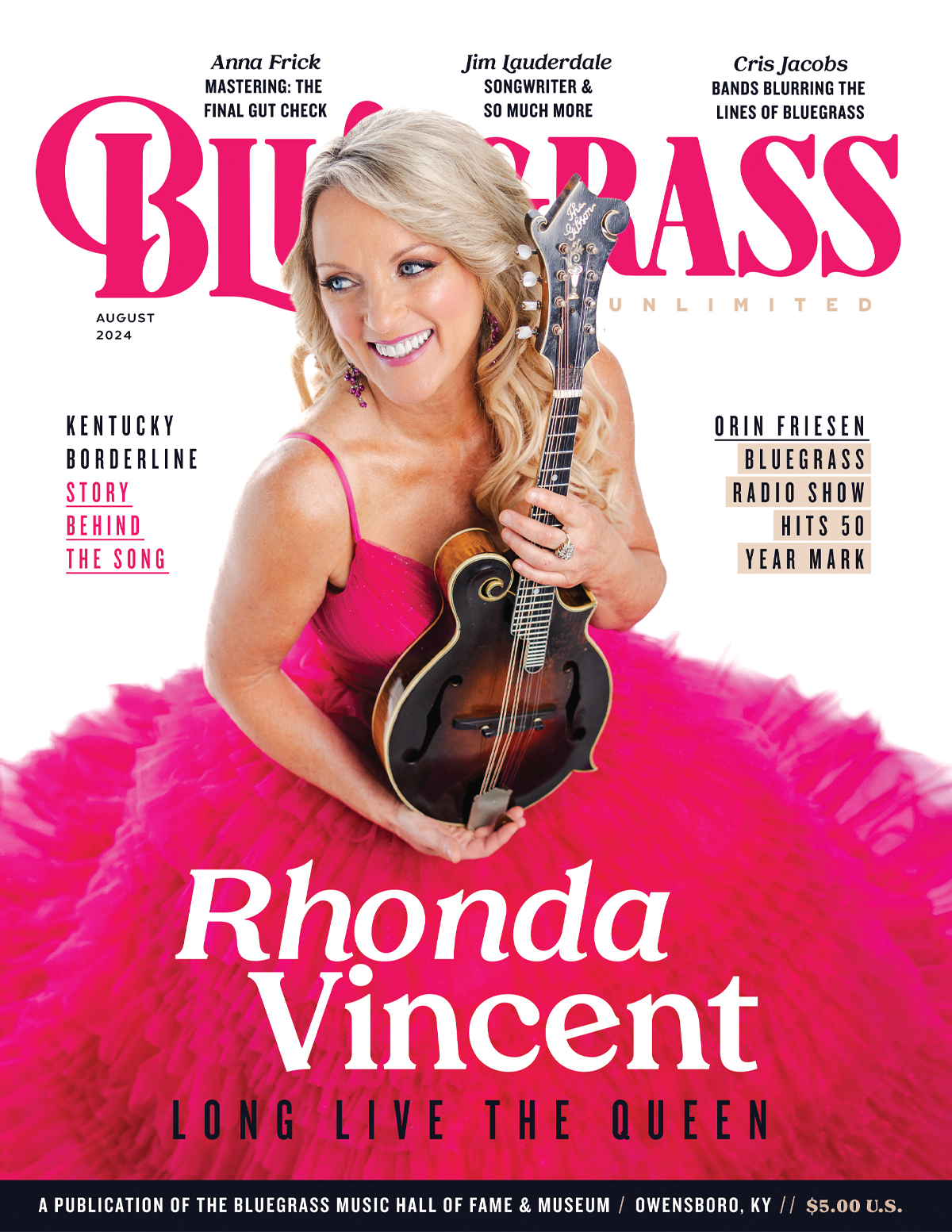Hold To A Dream, A Newgrass Odyssey
Even early in his life, John Cowan’s vocal talents surprised and impressed those who heard him. As Cowan, now 70, recalls in his memoir Hold To A Dream, it was the cute sister of one of his friends telling him—“You sing really good!”—that scotched his interest in playing football and motivated him to give his full attention to music. Years later, Cowan, then a member of the band Newgrass Revival, got a chance to wow festival audiences with his soulful, expressive tenor and thudding electric bass. Many traditional bluegrass fans, upon hearing the band Cowan, Sam Bush, Courtney Johnson and Curtis Burch—simply folded up their chairs and made for the exits. “… the joke among us,” Cowan writes, “and the dark reality was, that we began to refer to our sets as ‘chair-snappin’ time’ because fans who brought their coolers and portable chairs to enjoy Lester Flatt or Ralph Stanley or J.D. Crowe or the Country Gentlemen, would hear about ten or fifteen bars of our first song, and you could see it and hear it from the stage: Snap! Snap! Thump! Whap! Folks began leaving in droves for their cars while our fans, who looked and dressed a lot like us, hung around for our set.”
In the revolving-door, word-of-mouth world of bluegrass bands at that time Cowan was relatively unknown. He had nourished his singing on the mother’s milk of 1960s and 1970s country and progressive rock and soul. Sam Bush knew of him through a mutual friend. Cowan writes that at the time Bush phoned him to offer him an audition to play bass with NGR his latest project had been a Yes-inspired band called “You.” To make ends meet Cowan was working at a car wash in Louisville, Kentucky.
Cowan’s story of meeting and auditioning for the band at Courtney Johnson’s house in Barren County, Kentucky is some of the warmest material in the book. He writes about this time in his life as if he is writing a letter to a friend. Even though Louisville is only 100 or so miles from Barren County, Cowan experiences a Dukes of Hazzard-flavored culture shock when he arrives at a gas station to meet his future bandmates. The day of his audition the band hired Cowan and fired the drummer. Cowan moved into Johnson’s attic with his few possessions and a sleeping bag.
Touring, eventually in support of the great Leon Russell, followed. Once Johnson and Curtis Burch left NGR and were replaced by Béla Fleck and Pat Flynn the band evolved. The gumbo of musical influences became richer. At their peak in the 1980s NGR was a beacon of acoustic musical virtuosity, a group that resisted commercial expectations and defied pigeonholing. The initial cold reception from bluegrass purists notwithstanding, eventually the band was inducted into the International Bluegrass Music Association Hall of Fame.
Cowan’s own story, written in an informal voice, and illustrated by some photographs, covers the NGR era and parts of his childhood. It occupies a surprisingly small segment of the memoir. I wished he’d included more about himself, from his vocal development to his world-class 1980s mullet to his life in Nashville as a touring musician, studio musician and bandleader of his own eponymous group. Cowan, now a singer and bassist for the Doobie Brothers, conspicuously devotes more of the book to paying homage to former bandmates, musical inspirations, and collaborators than to sifting and taking perspective on the details of his own life. Cowan’s tributes to his heroes are published in the form of transcripts, many of them from interviews he did for a monthly radio show he hosted on Nashville’s WSM country radio station. He also writes some intros to these sections.
While the wide-ranging interviews with musical luminaries like Sam Bush, Béla Fleck, Leon Russell, Loretta Lynn, Sam Moore, Bonnie Bramlett, Robert Lamm and others don’t break a lot of new ground, they do reveal Cowan as a relaxed and friendly interviewer, an enthusiastic fan, and a curious, and deeply knowledgeable musician with eclectic tastes. An abiding love and respect for the work of his fellow vocalists and instrumentalists shines through these pages, as does his affinity for country rock of the late 1960s and the 1970s. Cowan is also a good listener. He allows his guests mostly free rein to tell their musical life stories in their own words, and when answers surprise him, he follows up.
All in all, Hold To A Dream, A Newgrass Odyssey written by Cowan with his friend Jimmy Schwartz is unorthodox. As a memoir it feels strangely self-effacing and limited. That said, it is an engaging, informed, and enjoyable read for those looking to follow Cowan and his heroes down the rabbit holes of their musical lives and influences and/or those who want to know more about Cowan and NGR.
Hold To A Dream, A Newgrass Odyssey, by John Cowan, with Jimmy Schwartz. Foreword by Wendy Waldman. Published 2024 by the Rowman & Littlefield Publishing Group, Inc.

